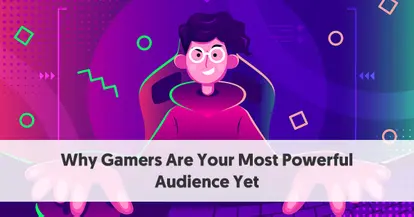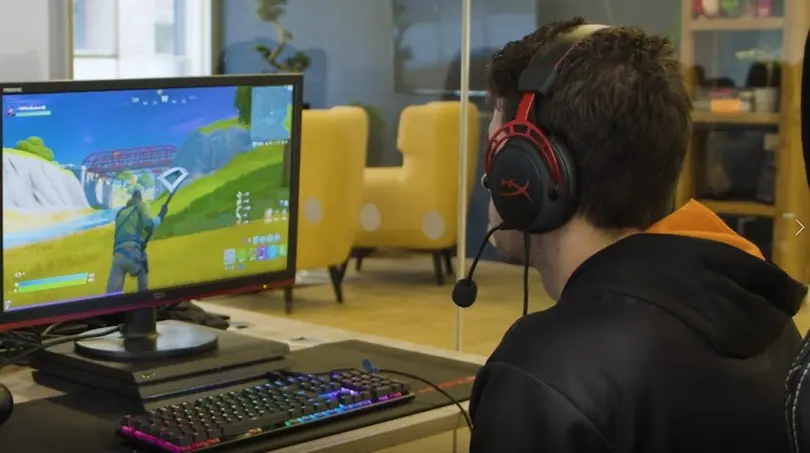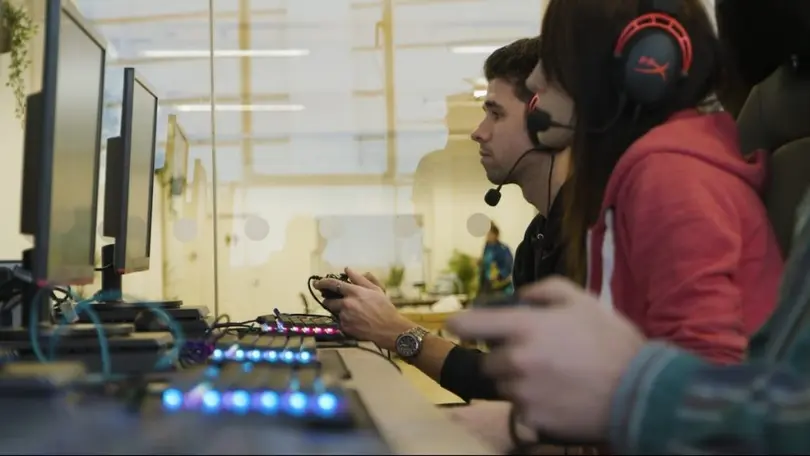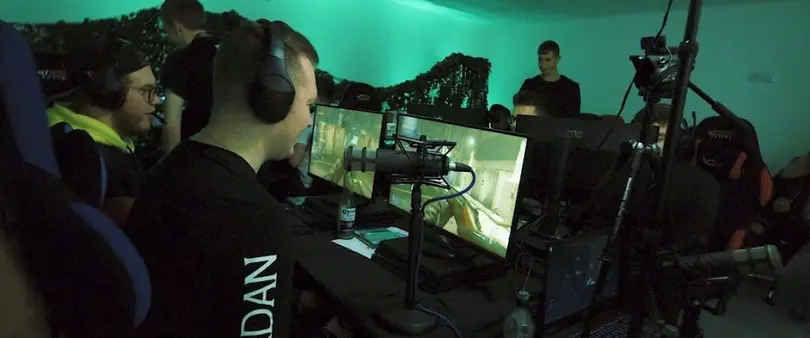Should every marketer consider the possibilities within the gaming industry when there is so much uncertainty in the world?
One hundred and sixty BILLION dollars. According to Newzoo, a market insights platform specialising in gaming, the gaming industry will generate $160bn in revenue in 2020, a 7.3% growth YoY. That number is eye watering considering about ten years ago being a gamer was something that was kept to your group of friends like a dirty little secret.
Now the industry is booming, even luxury fashion brands such as Louis Vuitton are getting a slice of the pie. For many businesses though, the prospect of entering this uncharted territory is intimidating and risky, especially at a time when businesses are becoming risk-averse.
2020 has seen clients re-allocate budget into new methods of marketing, as well as some panic and remove spend all together, which begs the question - how can you raise awareness of your product/service if you’re not speaking to an audience? The key is to find out where your audience is going and market to them there.
We regularly encounter brands who don’t fully understand the gaming audience, “they’re not our target market” “we’re not selling a product they’d be interested in”. Ironically the gaming audience has depth that not all brands fully understand.
What most marketers, senior business leaders and brands generally worry about, is the term “gamer”. Who are they? What do they want? WHO SENT THEM?! Whilst the term may be daunting, as uncharted territory, we’re here to discuss their value for businesses in 2020.
According to Statista there are over 3,24. billion gamers worldwide, but what exactly is a gamer? Back in the day they were stereotypically thought to be a sweaty teenage basement dweller, but the gamer of today couldn’t be further from that. In fact UKIE (The association for UK Interactive entertainment) reports that females make up roughly half of the gaming community in 2020, and in fact play games more regularly than men. Alongside this, the gaming community's age varies, from young to old, with a large portion of the audience sitting in the 18-35 bracket...the sweaty teenagers have left the basement.
How times have changed...
What it is important to consider is that as the gaming community has grown over the years introducing a diverse set of personas. A gamer is now a fashion expert, a fitness enthusiast, a connoisseur of food and drink, a keen traveller and a tech guru. This correlates to the amount of gaming influencers who now hold a second “lifestyle” channel which captures their time outside of playing games.
Additionally, a study carried out by Google reports that 47% of gamers are also parents. Marketers need to realise they’re not simply marketing to gamers who are interested in gaming products, they are marketing to an audience, across platforms they enjoy engaging with, who are interested in all of the above and have considerations for purchase far outside the latest gaming keyboard… pushchair anyone?
A gamers spending power (this is what you’re here for folks) is also considerably higher than average. Consumer research group Magid found that Gaming Enthusiasts, those who game for 10 hours or more a week, have disposable income that is double that of non-gamers. When we relate this to the earlier point around the gaming audience having interests outside of gaming, the proposition becomes a lot more attractive for a marketer looking to advertise their products or services to audiences with higher spending power.
BUT, it doesn’t stop there, as someone who has come from a retailer background I would challenge “but what is their interest in buying my product”. The report by Google we mentioned earlier also discussed the gamers as “uber consumers”, stating, “74% of YouTube Gamers surveyed said they would pay more for top-quality media and entertainment products and services. Eighty-five percent said they are willing to pay more for top quality consumer electronics products and services. And 73% made the same declaration regarding top-quality food and beverage products and services” (Thompson, K 2015) . So we know that gamers have access to higher disposable income, and that they are open to spending more on products that are deemed worth it. So where’s the negative?
The skeptics
Gamers are skeptical, an article published in 2019 by Gina Shalavi stated that their (gamers) skepticism “...can make it difficult for marketers looking to connect with an audience who can sniff out imposters and inauthenticity a mile away.” One way that brands have traditionally navigated this territory is through influencer marketing, a popular way of using someone else's personality to reach target/niche audiences, through recommendations of products.
However, as time goes on, audiences are waking up to the #ad and that aforementioned skepticism is making it harder for brands to cut through. To be effective in influencer marketing, brands must do two things: back up their influencer activation with a social presence that shows they are interested in the gaming audience, and activate creatively with influencers. The challenge this poses to most marketers and businesses as a whole is that understanding the gaming audience is not something you can pick up overnight, over a week, heck even over a year - it’s a constant process that requires dedicated attention, we’ve got a whole team for it…
Insight from Tubular, a video marketing insights platform, states that “55% of all gamers also say brands try to sell items that don’t relate to them while also using generic gaming language”. So while brands are using influencers to sell their products, gamers are savvy enough to research the brands themselves. What is important is that influencers should compliment a successful entry into the space, and this can be through the creative activation we mentioned earlier - if a brand has activated well enough with the influencer, giving them something to do which shows a clear understanding of the community, then brands can earn a “pass”; or brands must be ready for audiences to take to social to see if they care about them, or are simply trying to sell their latest phone or clothing range. This involves having a very strong social presence with a tone of voice which will resonate.
Influencers leading the Influencers.
Influencers are inherently led by their audiences, when new games come out that piques an audience's interest, an influencer can choose to massage (create content around) that interest or simply ignore it. In doing so the influencer will find out the difference between their loyal audience members who will watch them regardless of their content, and the audience members who are simply interested in the substance of the content. It’s quite ironic therefore that we refer to them as influencers, when actually they themselves are influenced by their audiences.
What influencers DO allow, is for us to tap into the audience data, finding out their age, gender and interests, and then come up with a creative-led approach which will engage and convert. By sticking with the standard approach of “I need to target this audience” and then finding influencers who do that, and not challenging what that audience quality actually is, we would be allowing influencer marketing to become celebrity endorsement, when it can offer so much more.
Creative-Lead
What is also important to remember with influencers, is that by promoting a product they wont naturally generate sales. Influencer marketing is also the prime opportunity for brands to show interaction with key figures in their space. Product placements, whilst still effective for some product categories such as fashion and beauty, are starting to lose interest from the gaming community. A creative led approach is necessary for brands to stand out, getting it wrong can alienate a brand completely from this very passionate audience (See Aldi Teatime Takedown… Ouch)
The Risk
So what are the risks? As with everything there are always risks, and with the current economic climate risks aren’t just scary they’re not sensible without consideration of all of the above. Mitigating the risks with a calculated approach equals a calculated risk… the risk never goes away, it can be reduced greatly however, through a higher level of detail and understanding of the audience, to ensure that expected results are backed by insight.
However, that in itself poses a risk. In 2019 there were over 900 agencies entering the “influencer marketing” space, the barrier to entry is so low that anyone can do it. The difference is knowing how to do it correctly, being able to predict results and having relationships with the influencers to ensure that brands are protected throughout. In our experience it can’t stop there either; influencer marketing should be rooted in a creative strategy and data driven insights, only then will you truly see the full potential of this form of marketing.
In conclusion...
We’ve given you all the information you need to know that the audience is worth exploring, but what’s the worst thing you can do? It’s to try and speak to the audience without the right support. Since our conception in 2015 we’ve worked on over 1200 campaigns that target the gaming audience, and we’ve learnt from every single one of them. It can be epitomised perfectly by the earlier mentioned article by Google,
“Gamers have high expectations for how brands engage them online. They want content from brands that entertains them (83%), taps into their passions (75%), and gives them useful information about how to use their products/services (70%)”









